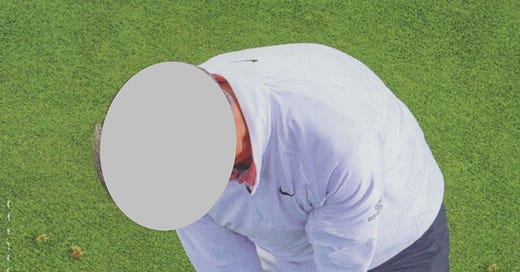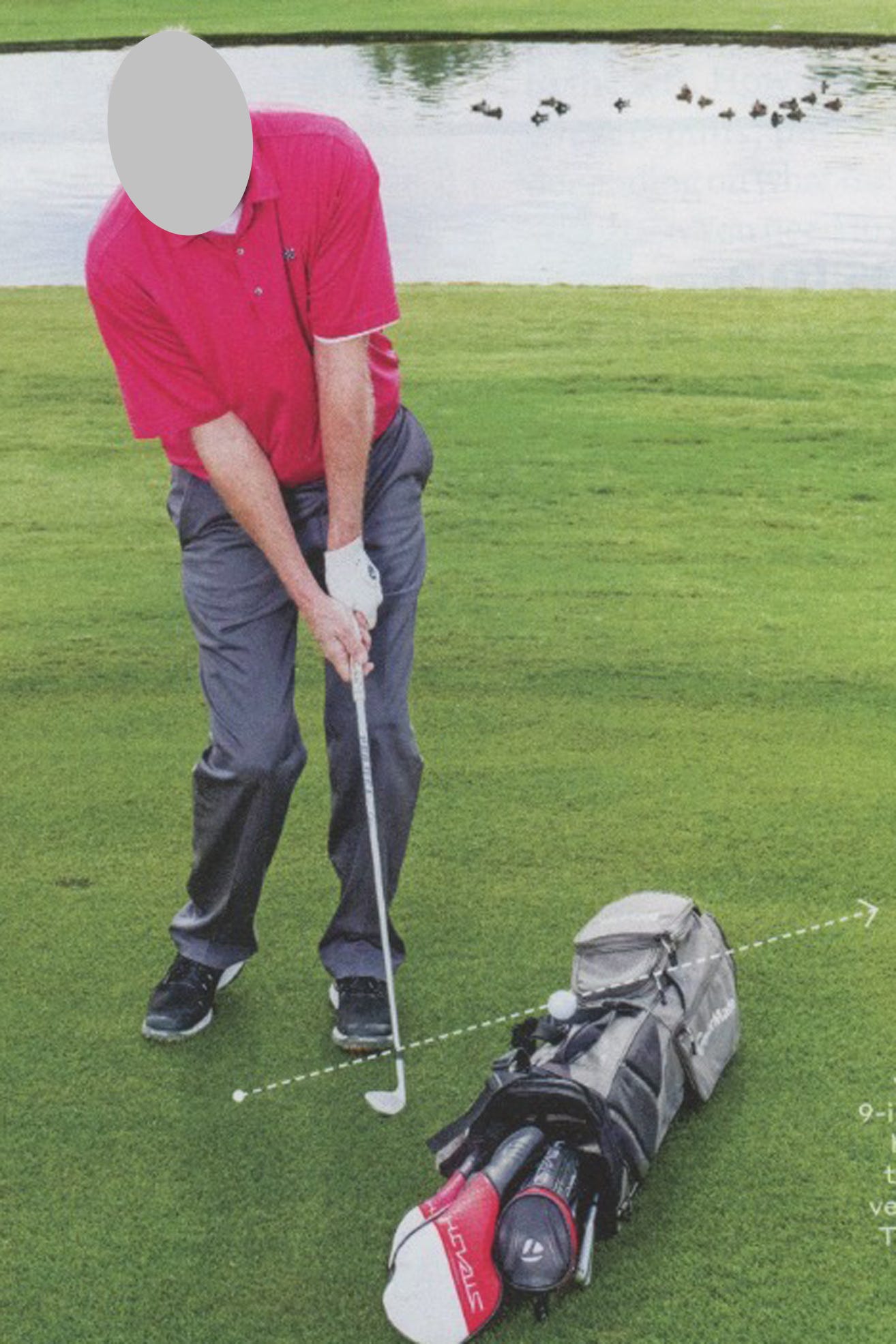The golf swing is a staggeringly complicated action. Within the timeframe of 2.5 seconds, the brain sends a flood of instructions to the muscles to perform a choreographed performance within a remarkably narrow tolerance. A mere 5-degree variation in the clubface angle will cause us to miss a 15-foot putt or a 50-yard fairway. Understandably, golfers are always interested in a lesson.
To help separate the wheat from the chaff (ie. the good stuff from the bad), understand that a satisfying golf shot must satisfy just 3 conditions: 1) the ball must be contacted by the center of the clubface, 2) the clubface must be facing the target at impact, 3) the club must be swung in the direction of the target. I recommend that any lesson that does not directly contribute to one or all of these should be taken with several grains of salt.
Here are some recent examples of suspect lessons:
This lesson suggests progressively making deep divots beginning at your trail foot to your forward foot. This is to improve “body turn” and “weight shift” to get the divot in the “right spot”. First, this lesson does not address any of the above 3 conditions. Second, it doesn’t define the “right spot”. And fourth, as with any drill, you will probably need to have a number of repetitions to acclimate. I don’t think your club, course or driving range would welcome these practice sessions.
This lesson was described to “help you aim at address”. It explains that upon completion of your swing, you raise your arms to see if the ball finished within the window the arms create. First the window depicted in the photo is wider than the arms. Second, for a target at 150 yards, your arm separation encompasses a width of 100 yards. Off the tee, the width is well beyond the trees on each side of the fairway. Third, how does this “help you aim at address”? Finally, how does this address the above 3 conditions?
This lesson is targeted at getting “really good at chipping”. It suggests that Harvey Penick’s drill making chip shots under a bench to get a player to “lead with the hands” can be overdone and that with today’s clubs, less shaft lean is called for. It is suggested that you let the club “release a bit” to find a happy medium between the two. First, how much is a bit, and when do we know when we get there? Second, isn’t a “medium between the two, neither lead or release, and isn’t that precisely what we see in the photo? Finally, how does this address the above 3 conditions?
Bottom Line: These three instructors are professionals and have built a reputation from helping golfers improve. In such golf articles we don’t see a lot of quotation marks indicating the exact words of the instructor. Instead these are the words of the magazine editor. Also, let’s factor in that they are attempting to compress a lesson into 200 words or less and that not every drill proves itself over time.
When reading articles or watching videos, keep those 3 conditions in mind and use them to help separate the wheat from the chaff and avoiding lesson lunacy.
Each Thursday we’ll bring you a helpful insight.
Swing to the Target,
Ed
Learn from our Tube Videos
Have golf buddies? Share this article.







